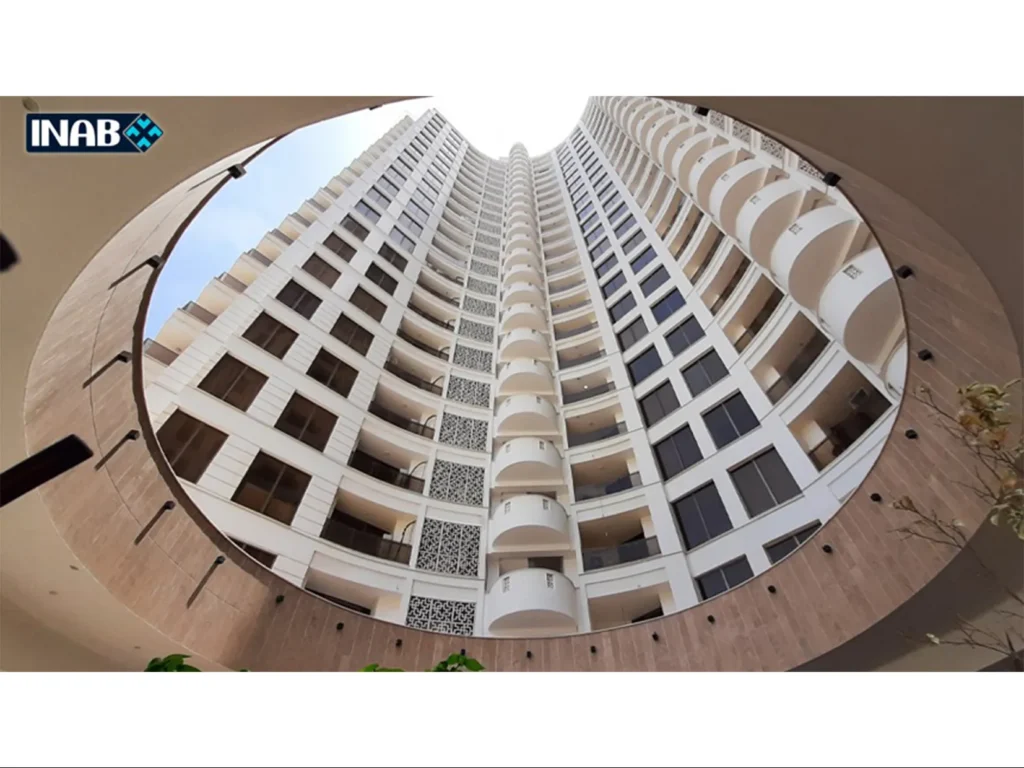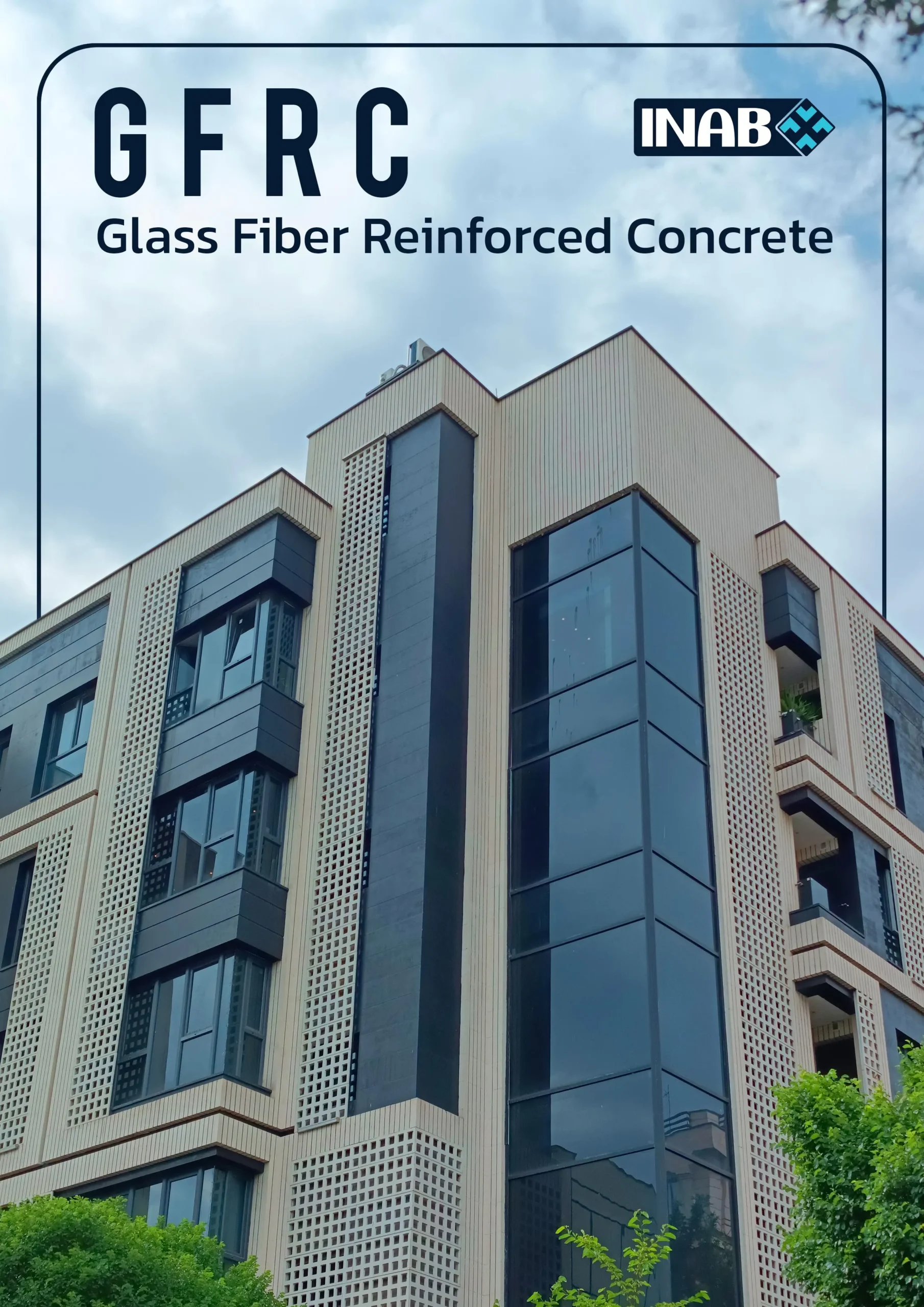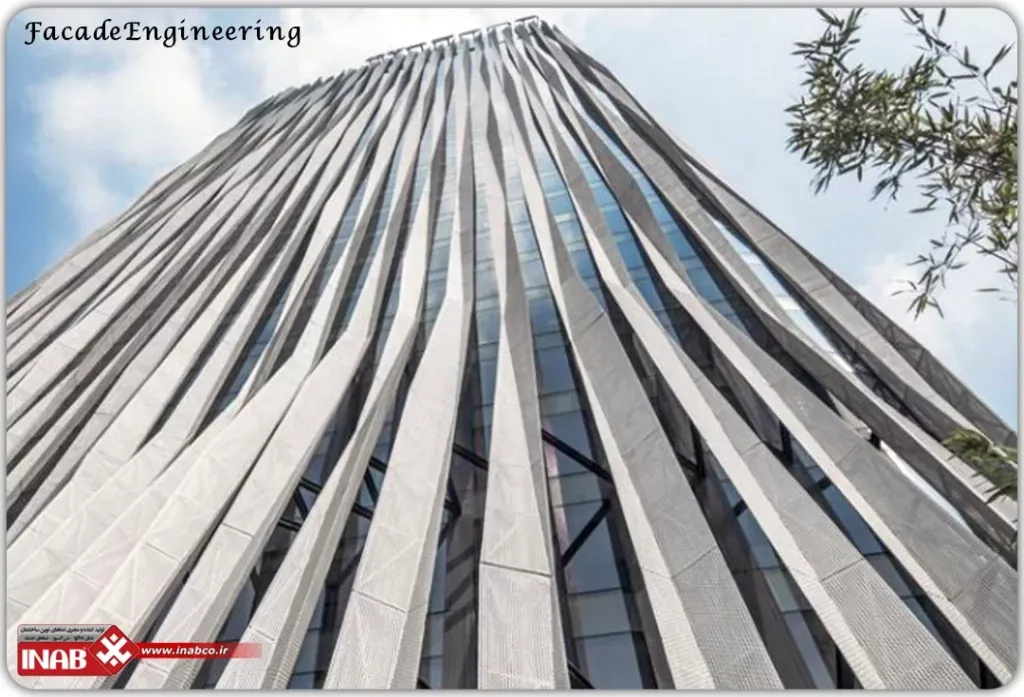What Is Façade Engineering?
Façade engineering is an interdisciplinary field that has emerged alongside the increasing complexity and diversity of architectural forms. It can be described as a fusion of science, art, and technical knowledge from both environmental and structural disciplines, aimed at achieving a high-performance, valuable, and sustainable building envelope.
An interesting aspect of this definition is that façade engineering serves as a crucial link between the three core domains of architecture, structural engineering, and building services. As a result, its significance in contemporary construction and design continues to grow.
Who Is a Façade Engineer?
The primary academic background of façade engineers typically lies in civil or structural engineering, but the field extends far beyond these disciplines. Façade engineering is a highly industrial profession, deeply connected to manufacturing and construction processes. Therefore, façade engineers must possess a broader understanding of both industrial systems and aesthetics compared to many other engineering professionals.
Since the façade represents the visual identity and character of a building, the aesthetic responsibilities of a façade engineer can rival those of an architect—sometimes even exceeding them in scope and impact.
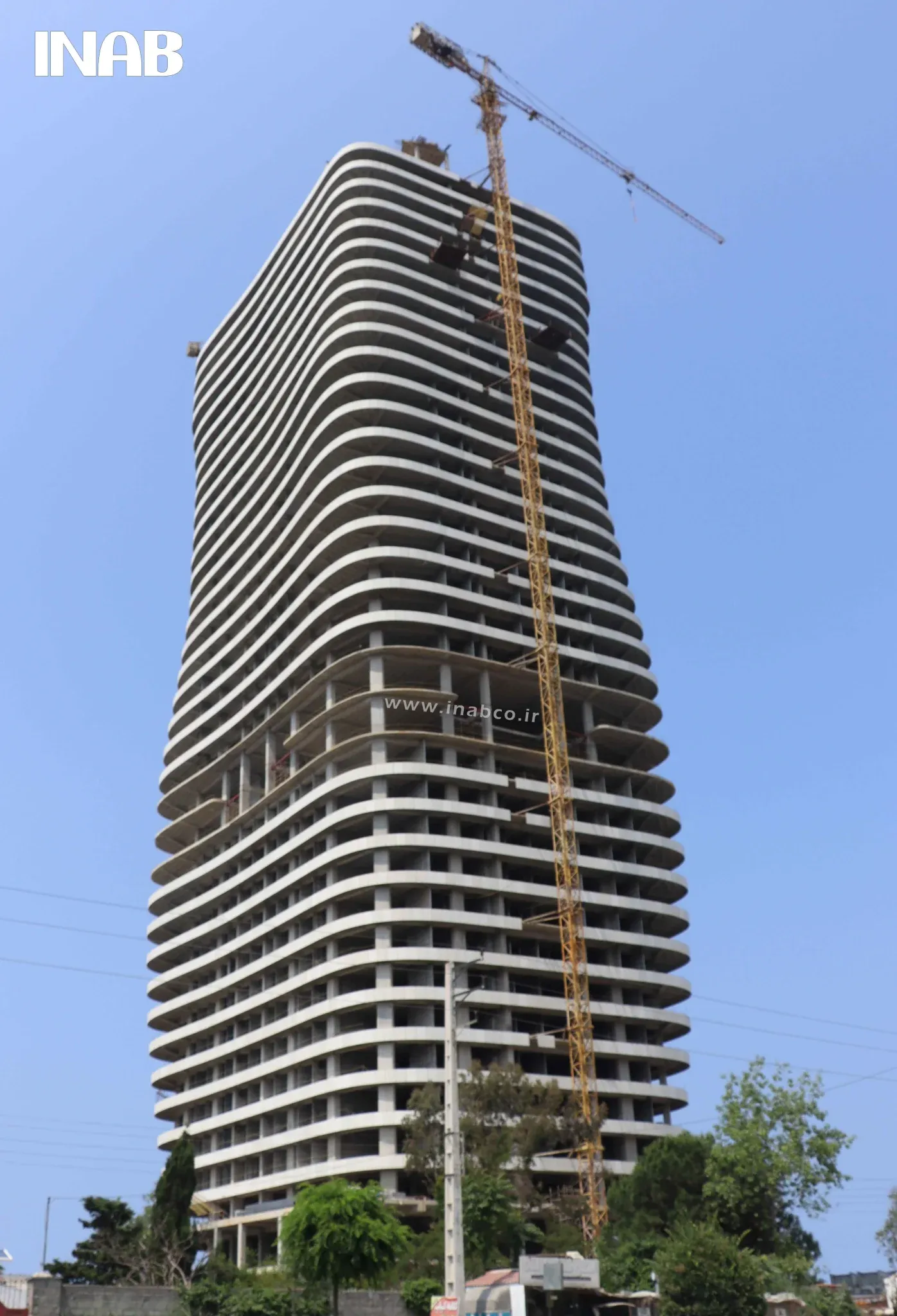
Types of Façades
The façade of a building, as the first and most prominent visual element encountered, plays a critical role in its aesthetic appeal and architectural identity. Choosing the appropriate façade type depends on numerous factors, including the building’s function, climatic conditions, budget, and the client’s preferences. With a wide variety of materials and design styles available, each façade type offers distinct characteristics.
Main Types of Façades
- GFRC (Glass Fiber Reinforced Concrete): A highly popular and durable option, GFRC façades can be custom-designed and manufactured to suit the client’s taste, offering flexibility in shape and dimensions.
- Natural Stone: Known for its durability, natural beauty, and wide range of colors and textures, it is an ideal choice for classic and luxurious façades.
- Brick: A traditional and authentic façade material that provides excellent thermal insulation and long-lasting performance.
- Glass (Curtain Wall Systems): Best suited for modern and commercial buildings, these systems offer abundant natural light and expansive views that enhance interior ambiance.
- Composite Panels: Lightweight, durable, and available in a wide range of colors, making them suitable for contemporary and industrial-style façades.
- Exposed Concrete: A modern, minimalist façade solution offering high resistance to weathering and a raw, architectural appearance.
- Wood: A warm and natural façade material with good thermal insulation, though it requires regular maintenance to preserve its quality.
- Ceramic: Durable and resistant to temperature changes, ceramic façades come in various designs and colors.
- Metal: Extremely durable and industrial in appearance, metal façades are well-suited for modern and commercial architecture.
- Green (Living Façades): Incorporating vegetation and greenery, these façades help improve air quality and reduce ambient temperatures, contributing to environmental sustainability.

Factors Influencing the Choice of Façade Type
- Building Function: Residential, commercial, office, and industrial buildings each require specific materials and architectural styles tailored to their unique needs.
- Climatic Conditions: Resistance to moisture, rainfall, wind, and temperature fluctuations are critical factors when selecting façade materials to ensure durability and performance.
- Budget: Different façade types incur varying costs, and material selection is often guided by the project’s allocated budget.
- Client Preferences: The client’s taste and desired architectural style play a decisive role in determining the type of façade used.
The Importance of Using a Façade Engineer in Building Construction
It’s essential to designate a façade engineer for a building right from the start of any construction project. In fact, having a façade engineer as part of the design team is a fundamental requirement. Without one, critical issues like accurately calculating the building’s setback and the outward projection of the façade might be overlooked, potentially causing serious problems. This is just one reason highlighting the significance of façade engineering. Therefore, the necessity of involving a façade engineer becomes clear.
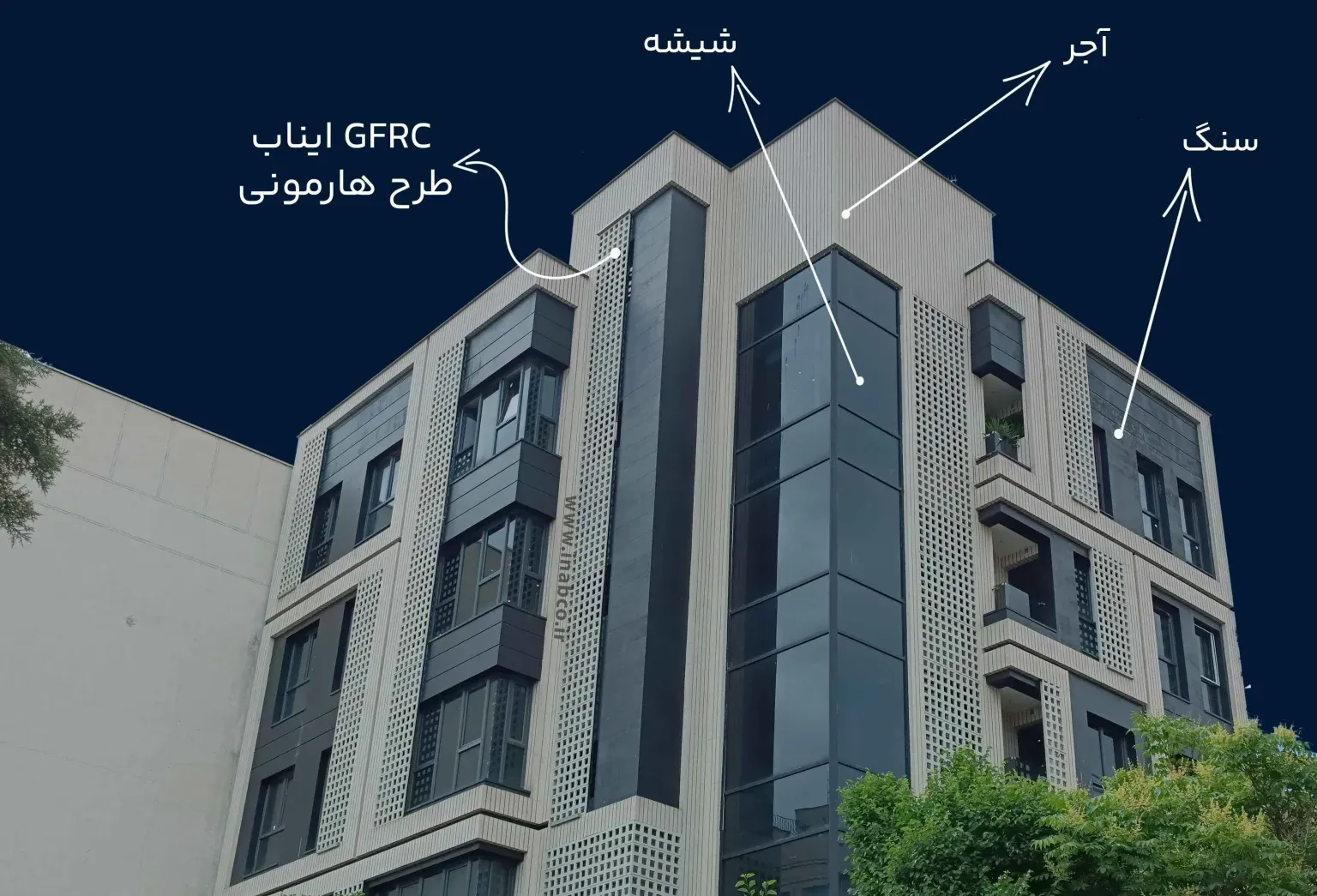
Key Responsibilities in Façade Engineering
A façade engineer must possess comprehensive knowledge about various structures, energy considerations, architectural styles, and construction details for each building. Generally, the responsibilities of façade engineers include:
- Climatic Conditions: The local climate is a foremost consideration, as the building façade is directly exposed to environmental elements.
- Structural Behavior: Every structure has its unique structural behavior that must be carefully analyzed.
- Interaction with the Main Structure: A façade engineer must understand that the façade isn’t a self-supporting structure. It needs to transfer its weight to the main structural frame. Therefore, if the main structure is stable, the façade will naturally be stable as well.
- Heat Transfer Through the Façade: It’s important to note that the façade isn’t merely a source of heat loss; it can also act as a heat absorber.
- Energy Efficiency: Energy conservation is a crucial global issue. Through proper design, façade engineering can help prevent energy waste.
- Ventilation: Although this primarily relates to mechanical engineering, the building façade can contribute to ventilation. Hence, façade engineers need to incorporate suitable solutions.
- Durability: All parts of a building must have appropriate longevity and stability. Accordingly, the façade must be durable based on its intended function.
- Fire Safety: Using inappropriate façade materials can cause severe damage in the event of a fire.
- Acoustics: This aspect of façade engineering receives less attention in some regions, including Iran, but it plays a vital role in blocking external noise pollution and improving occupant comfort.
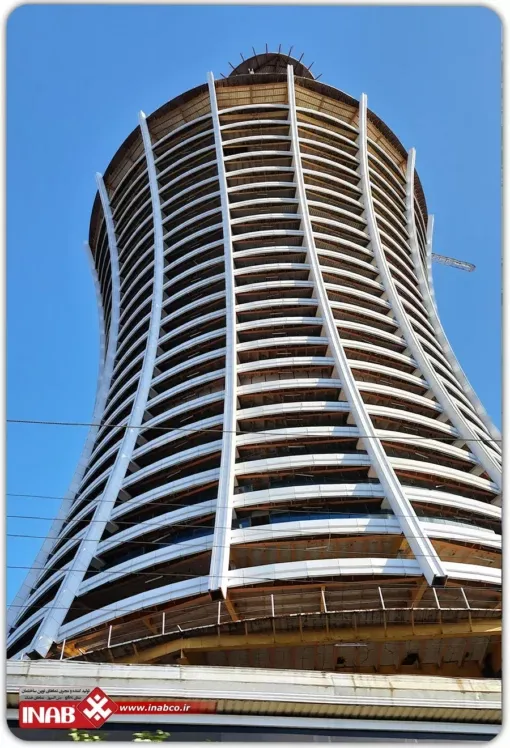
Façade Engineering Courses Worldwide
As you know, façade engineering isn’t recognized as a core or standalone engineering discipline within university programs in some countries. While acknowledged as a practical field of knowledge and technical expertise, it’s still not offered as a separate major in universities there. Even when official directives were issued to add new engineering disciplines to university curricula, façade engineering was not included in the scope of consideration by the authorities.
However, this isn’t the case in many developed countries, where façade engineering is recognized as a popular and established field of study. For example, the Baden-Wuerttemberg Cooperative State University (DHBW) in Germany offers a bachelor’s degree in Civil Engineering with a focus on Façade Construction (this is where the DAAD database points to a relevant program). Another example is the University of West London, which provides both master’s and doctoral programs in façade engineering. Interestingly, the head of their Civil Engineering research group is Professor Ali Bahadori-Jahromi, an Iranian engineer internationally renowned as one of the leading experts in this field.
Engineering Challenges in Facade Design
Facade engineering is a complex, interdisciplinary discipline that integrates structural performance, architectural expression, environmental response, fire safety, and long-term maintainability. More than just the outer skin of a building, the facade plays a vital role in functionality, resilience, and user experience. Successfully resolving the engineering challenges associated with facades requires a holistic, systems-based approach that balances aesthetics with technical precision.
Key Challenges in Facade Engineering
- Structural Integration with the Primary Frame
- Managing Lateral Loads (Wind & Seismic)
- Ensuring Fire Safety and Code Compliance
- Thermal and Acoustic Performance Optimization
- Installation and Maintenance Accessibility
- Detailing and Weatherproofing Complexity
- Cost, Time, and Value Optimization
- Sustainability and Integration of Emerging Technologies
Conclusion
Facade engineering stands at the intersection of art and science—demanding a careful balance between form, function, and feasibility. By leveraging advanced design methodologies, innovative materials like GFRC, and strategic problem-solving, engineers can address the most pressing facade challenges—from structural safety to sustainability. In forward-thinking regions such as Iran, applying these best practices can elevate architectural outcomes to meet and exceed global standards—creating facades that are not only visually iconic but also high-performing, resilient, and future-ready.
Challenges in the Field of Façade Engineering
Like any other profession, façade engineering comes with its own set of challenges and threats that must be carefully considered. Some of the most notable challenges include:
- Structural Challenges:
In buildings taller than 60 meters, calculating wind loads becomes significantly complex. In such cases, advanced methods like wind tunnel testing must be employed to ensure accurate analysis and design. - Installation Methodology:
Each building presents unique conditions in terms of street access, neighboring properties, traffic, and availability of cranes, towers, or hoists. Therefore, façade installation strategies must be adapted accordingly. Effective implementation requires careful planning for material delivery, on-site storage, vertical transportation, installation procedures, and proper sealing. - Development of Engineering Documentation:
A fundamental requirement in façade engineering is the preparation of both general and detailed drawings. Without precise and comprehensive shop drawings, achieving high-quality execution and proper supervision becomes virtually impossible. - Safety Regulations:
One of the primary hazards in buildings is the potential detachment of façade elements during earthquakes. To mitigate this risk, façade engineers are strongly encouraged to prioritize dry construction techniques over traditional masonry materials. - Access and Maintenance Planning:
Post-occupancy maintenance, such as cleaning and replacing façade components, presents another challenge. Façades often require periodic cleaning using techniques like rope access, spider systems, monorails, or other specialized methods. As such, these maintenance needs must be anticipated and integrated into the design from the outset.


